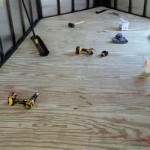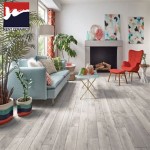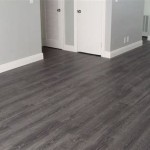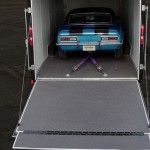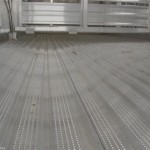Rubber Exercise Flooring: A Comprehensive Guide
Rubber exercise flooring is a popular and functional choice for a wide range of fitness environments, from home gyms and personal training studios to large-scale commercial fitness centers. Its durability, shock absorption, and ease of maintenance make it a versatile and cost-effective solution for protecting subfloors and providing a safe and comfortable surface for exercise. This article provides a comprehensive overview of rubber exercise flooring, covering its various types, benefits, installation considerations, maintenance practices, and factors to contemplate when selecting the best option for specific needs.
Types of Rubber Exercise Flooring
The market offers various types of rubber exercise flooring, each with unique characteristics and applications. Understanding these distinctions is essential for making an informed decision.
Rubber Rolls: Rubber rolls are a common choice for covering large areas. They are typically available in varying thicknesses and widths, offering flexibility in installation and customization. Rolls provide a seamless or near-seamless appearance, minimizing the risk of tripping hazards. The manufacturing process involves bonding recycled or virgin rubber granules under heat and pressure, resulting in a dense and resilient material. Rolls are often adhered to the subfloor using a suitable adhesive.
Rubber Tiles: Rubber tiles provide a modular approach to flooring. They are available in various shapes and sizes, often with interlocking edges that facilitate easy installation. Tiles can be advantageous for smaller spaces or areas requiring frequent reconfiguration. Damaged tiles can be easily replaced without affecting the entire floor. Interlocking tiles can be loose-laid in some applications, while glue-down options are also available for a more permanent installation.
Rubber Mats: Rubber mats are typically smaller and thicker than rolls or tiles. They are often used for specific exercise areas, such as weightlifting platforms or under exercise equipment. Mats provide excellent shock absorption and sound dampening, protecting the subfloor from heavy impacts. They are generally loose-laid, allowing for easy portability and repositioning.
Specialty Rubber Flooring: Beyond these standard types, specialized rubber flooring options cater to specific needs. These include textured surfaces for enhanced traction, colored or patterned flooring for aesthetic appeal, and flooring designed for outdoor use with UV resistance and drainage capabilities. Specialty formulations might also incorporate additives to enhance slip resistance or antimicrobial properties.
Benefits of Rubber Exercise Flooring
The popularity of rubber exercise flooring stems from its numerous advantages, making it a practical and desirable choice for fitness environments.
Durability and Longevity: Rubber is a highly durable material that can withstand heavy foot traffic, equipment weight, and repeated impacts. Its resilience allows it to maintain its structural integrity over time, even under demanding conditions. High-quality rubber flooring can last for many years with proper maintenance, making it a cost-effective investment.
Shock Absorption and Impact Resistance: Rubber's inherent elasticity provides excellent shock absorption, reducing the risk of injuries associated with high-impact activities. It helps cushion joints and muscles, minimizing strain and fatigue. This feature is particularly important in areas where activities like jumping, plyometrics, and weightlifting are performed.
Noise Reduction: Rubber's sound-dampening properties help reduce noise levels, creating a more comfortable and focused workout environment. This is beneficial in both home gyms and commercial fitness centers, minimizing disturbances to other areas or individuals. The thickness and density of the rubber flooring directly impact its noise reduction capabilities.
Slip Resistance: Rubber flooring offers excellent slip resistance, even when wet. This enhances safety and reduces the risk of slips and falls, particularly important in areas with high moisture levels, such as near pools or showers. Some rubber flooring options feature textured surfaces to further improve traction.
Ease of Maintenance: Rubber flooring is relatively easy to clean and maintain. Regular sweeping or vacuuming removes loose debris, and occasional mopping with a mild detergent keeps the surface clean and hygienic. Rubber is resistant to staining and damage from most cleaning agents, simplifying the maintenance process.
Environmental Considerations: Many rubber flooring products are made from recycled rubber, contributing to sustainability efforts and reducing waste. Recycled rubber flooring often utilizes discarded tires, diverting them from landfills and repurposing them into a useful product. Low VOC emissions are also an important environmental consideration, ensuring good indoor air quality.
Installation and Maintenance Considerations
Proper installation and maintenance are crucial for maximizing the lifespan and performance of rubber exercise flooring.
Subfloor Preparation: The subfloor must be clean, level, and dry before installing rubber flooring. Any imperfections or unevenness in the subfloor can affect the appearance and performance of the finished floor. Concrete subfloors should be free of cracks, dust, and debris. Wood subfloors should be structurally sound and free of moisture.
Adhesive Selection: The appropriate adhesive should be selected based on the type of rubber flooring and the subfloor material. Water-based adhesives are generally preferred for their low VOC emissions. The adhesive should be applied evenly according to the manufacturer's instructions. Improper adhesive selection or application can lead to bonding failures and floor damage.
Installation Techniques: The installation process varies depending on the type of rubber flooring. Rolls require careful alignment and cutting to ensure a seamless fit. Tiles, especially interlocking tiles, require precise alignment to create a uniform surface. Mats are typically loose-laid, making installation straightforward. Professional installation is recommended for large or complex projects.
Cleaning and Maintenance: Regular cleaning is essential for maintaining the appearance and hygiene of rubber flooring. Sweeping or vacuuming removes loose debris, and mopping with a mild detergent cleans the surface. Avoid using harsh chemicals or abrasive cleaners, which can damage the rubber. Promptly clean up spills to prevent staining. Consider using floor mats at entranceways to minimize dirt and debris tracked onto the rubber flooring.
Preventative Measures: Implementing preventative measures can extend the lifespan of rubber flooring. Use equipment mats under heavy machinery to protect the floor from damage. Avoid dropping heavy objects directly onto the floor. Regularly inspect the flooring for any signs of wear or damage, and address any issues promptly. Proper ventilation can help prevent moisture buildup and mold growth.
Repair and Replacement: Damaged rubber flooring can often be repaired or replaced. Small tears or punctures can be repaired using a rubber repair kit. Severely damaged sections may need to be replaced. With tiles, individual damaged tiles can be easily replaced. For rolls, a section may need to be cut and replaced with a new piece.
Specialized Maintenance: Some types of rubber flooring may require specialized maintenance. For example, textured surfaces may require more thorough cleaning to remove dirt and debris from the crevices. Colored rubber flooring may require specialized cleaning products to prevent fading. Consult the manufacturer's recommendations for specific maintenance guidelines.
Factors to Consider When Choosing Rubber Exercise Flooring: When selecting rubber exercise flooring, numerous factors should be carefully considered to ensure the best option for specific needs and applications.
Thickness and Density: The thickness and density of the rubber flooring affect its shock absorption, durability, and noise reduction capabilities. Thicker and denser flooring provides better protection and sound dampening. Consider the types of activities that will be performed on the floor and choose a thickness and density that is appropriate for those activities.
Recycled Content: If environmental sustainability is a concern, consider rubber flooring made from recycled content. Recycled rubber flooring is a more environmentally friendly option than virgin rubber flooring. Inquire about the percentage of recycled content and the source of the recycled materials.
VOC Emissions: Volatile organic compounds (VOCs) are chemicals that can be released into the air from some rubber flooring products. Choose rubber flooring with low VOC emissions to ensure good indoor air quality. Look for products that are certified by organizations such as GreenGuard.
Surface Texture: The surface texture of the rubber flooring affects its slip resistance and aesthetic appearance. Textured surfaces provide better traction and can also add visual interest. Consider the types of activities that will be performed on the floor and choose a texture that is appropriate for those activities.
Color and Design: Rubber flooring is available in a wide range of colors and designs. Choose a color and design that complements the overall aesthetic of the space. Consider using different colors or patterns to delineate different exercise areas.
Cost: The cost of rubber flooring varies depending on the type, thickness, density, and features. Obtain quotes from multiple suppliers and compare prices carefully. Consider the long-term cost of ownership, including installation and maintenance costs.
Warranty: Choose rubber flooring with a comprehensive warranty. A warranty protects against defects in materials and workmanship. Read the warranty carefully to understand the terms and conditions.
Supplier Reputation: Choose a reputable supplier with a proven track record of providing high-quality rubber flooring products and services. Research the supplier's reviews and ratings. Inquire about the supplier's experience and expertise.
Selecting the right rubber exercise flooring requires careful consideration of various factors, including the type of flooring, the benefits it offers, the installation and maintenance requirements, and the specific needs of the fitness environment. By understanding these aspects and conducting thorough research, it is possible to choose a rubber exercise flooring solution that provides optimal performance, safety, and durability for years to come.

Non Slip Rubber Floor Rolls 10 Color Geneva 3 8 Inch

Powerstock Home Gym Floor Mats Abacus Surfaces

Affordable And Durable 6mm Rubber Gym Flooring Tiles For High Energy Workouts

Flooring For An In Home Exercise Room Rubber Floors

Comparing Foam Pvc Carpet Gym Flooring Materials

What Is The Best Thickness For Weight Gym Flooring Mats

What S The Best Flooring For A Home Gym America

Rolled Rubber Flooring For Gyms Warehouses Manufacturing

Rubber Home Gym Flooring Rolls Confetti Black Floor Fitness Fitfloors Com

Exercise Rubber Flooring Perfect Surfaces
Related Posts


